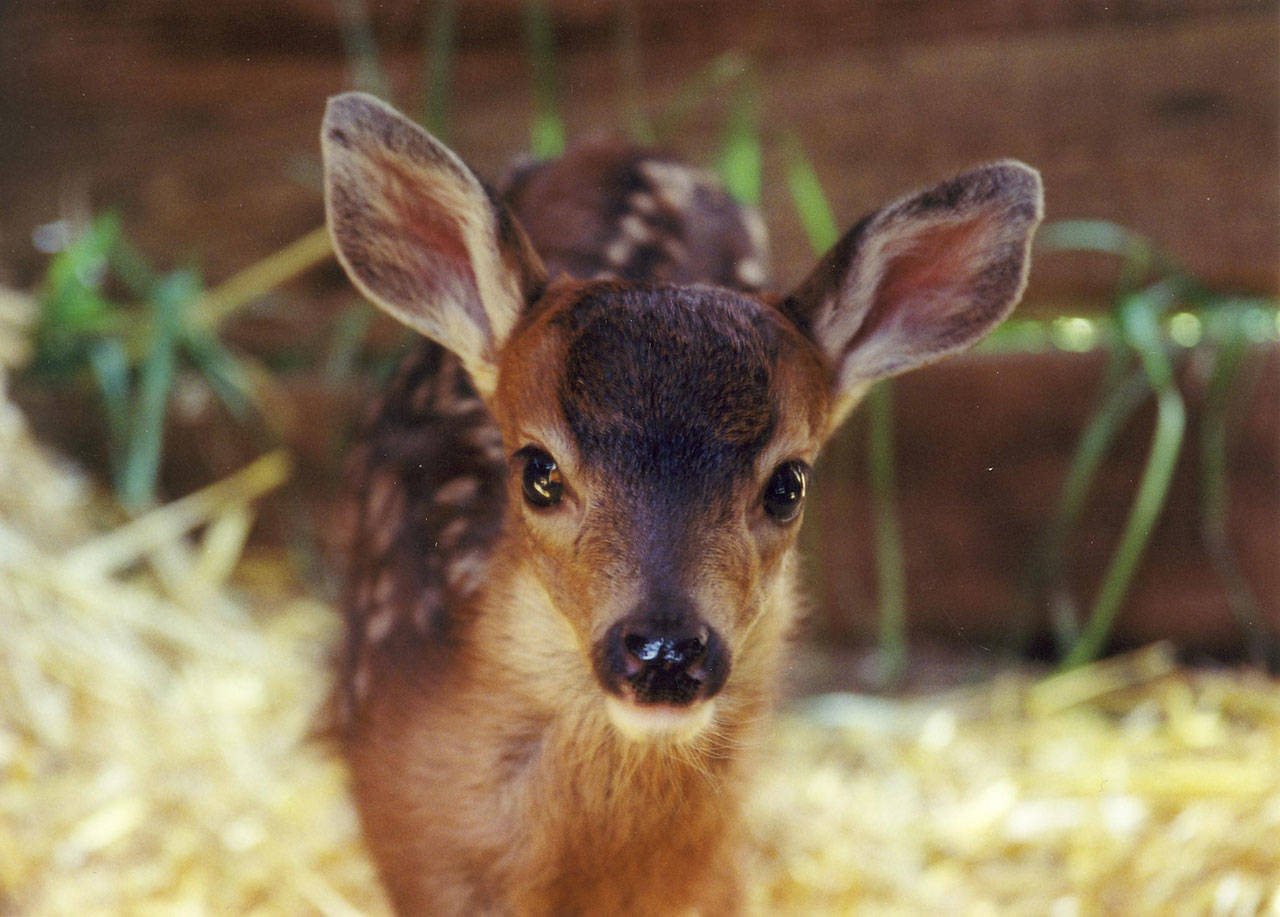As spring in the San Juans breaths new life into its prairies and forests, from purple camas to hooked spur violets, so too come the birth of fawns.
Their beginnings were discussed at The Whale Museum and Wolf Hollow Wildlife Rehabilitation Center’s lecture series “Wild San Juans” on May 5, as the first of four talks, which also included fledgings and fox kits.
It’s baby season for these native island animals, proclaimed The Whale Museum Executive Director Jenny Atkinson — who stood in for Wolf Hollow’s Shona Aitken — so watch for fawns hidden in tall grass, fox kits playing outside dens and recently hatched fledglings fallen from outstretched branches.
“As residents of this island, we are actually living in a wildlife habitat,” said Atkinson, who explained the lectures shed light on how residents can protect local wildlife.
From late April to early May, the island’s miniature, black-tailed does birth one to two fawns, as small as house cats, often leaving them curled under shaded thickets while searching for food. Every six to eight hours, mom returns to nurse, detecting, by scent, the camouflaged fawns’ spotted coats, disguised like dappled sun rays through forest foliage.
As weeks pass, fawns, perched on wobbly legs, can be found trailing does, which nurse them through September. They recognize each other’s voices, often calling for one another across fields, and remaining together, even after the fawns’ ears have grown and spots have faded, until fall’s mating season.
This Mother’s Day, it’s the does who deserve special recognition.
“Basically mom does all the work,” Aitken told the Journal. “Males hang out in bachelor’s group and have nothing to do with raising youngsters.”
She warns against what she calls “Bambi-knapping,” when good-intentioned islanders grab nesting fawns, thinking they’ve been abandoned. Orphaned fawns are easy to spot, said Atkinson, as they are often left crying in fields. As a last resort, they’re taken to Wolf Hollow, and identified by colored, paper collars, until returned to the wild. So far, this season, Wolf Hollow has none.
Frightened fawns drop to the ground to hide from predators, whether they’re in tall grass or a roadway, said Atkinson. Looking for animals eyes on the side of the road at night can help avoid hitting them, she added.
Fowl — like ducks and geese— as well as other birds — like owls, crows, sparrows and robins — are also entering the world. Fowl are hatched with fuzzy bodies, eyes opened, ready to follow mom to nearby water. Orphaned fowl are placed under feather dusters at Wolf Hollow to mimic mom’s warmth until they grow feathers by about week 12 and are released in the wild.
Other birds are hatched, unable to see or walk, relying on mom to feed them. Wolf Hollow currently has four hatchling birds and one fledgling robin. Before fledglings can fly, they often hop onto branches. If they fall, wait for mom to arrive before stepping in, unless predators like dogs and cats are nearby.
Those are the same predators to fox kits, who were born about two months ago. As the weather warms, fox kits in shades of yellow, red, brown, black, and grey, hop outside dens while parents search for food. Islanders’ penchant for sharing picnics with fox kits is harmful, said Atkinson, as they can associate cars with snacks, which puts them in danger. Plus, they have plenty of natural food, like the American Camp rabbits. Currently, Wolf Hollow has no orphaned fox kits.
To purchase $5 car magnets that read “Slow, San Juans: It’s baby season!” featuring an island doe and fawn, contact The Whale Museum at 378-4710. To learn more about island wildlife, visit whalemuseum.org or wolfhollowwildlife.org.



